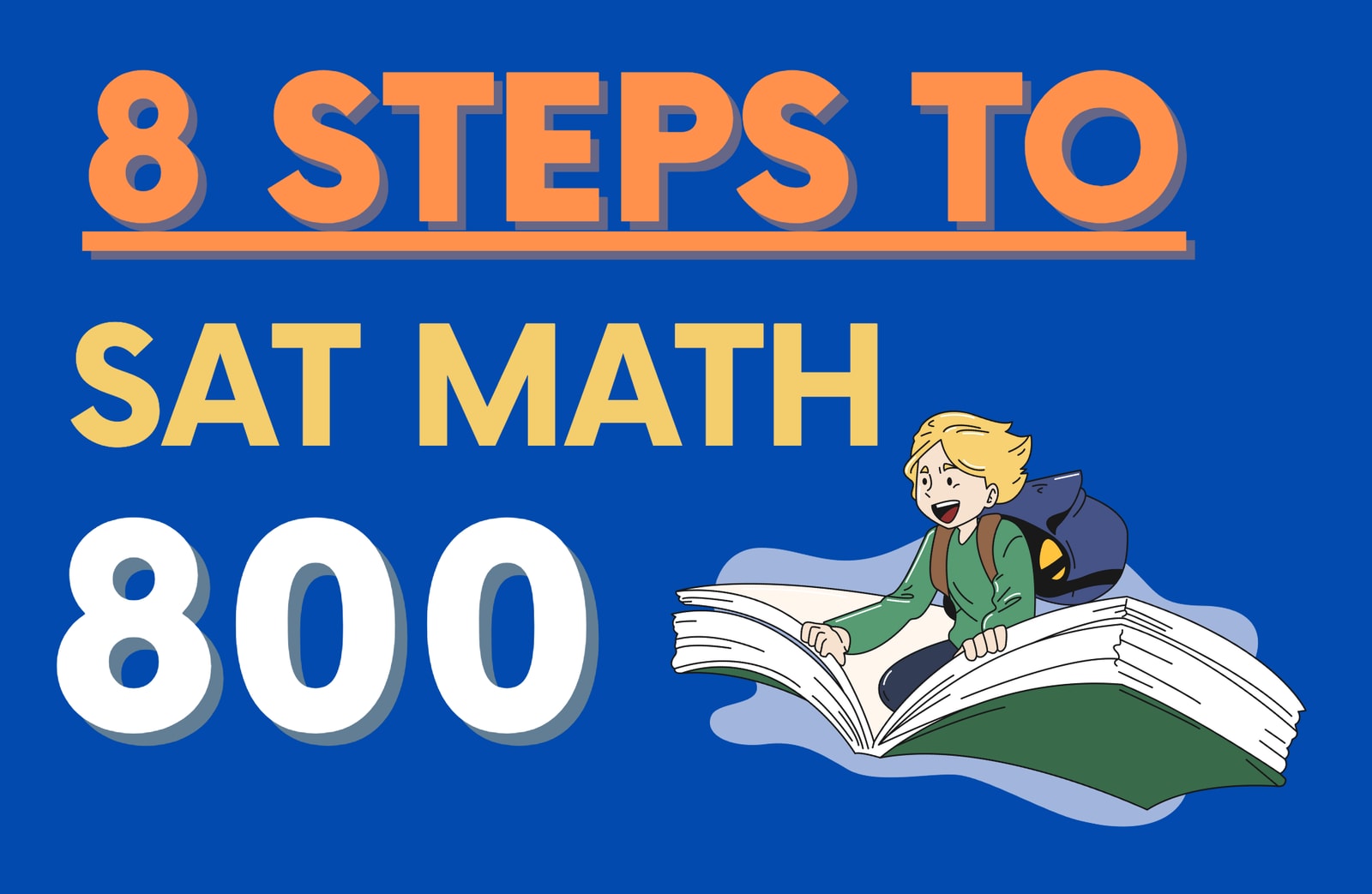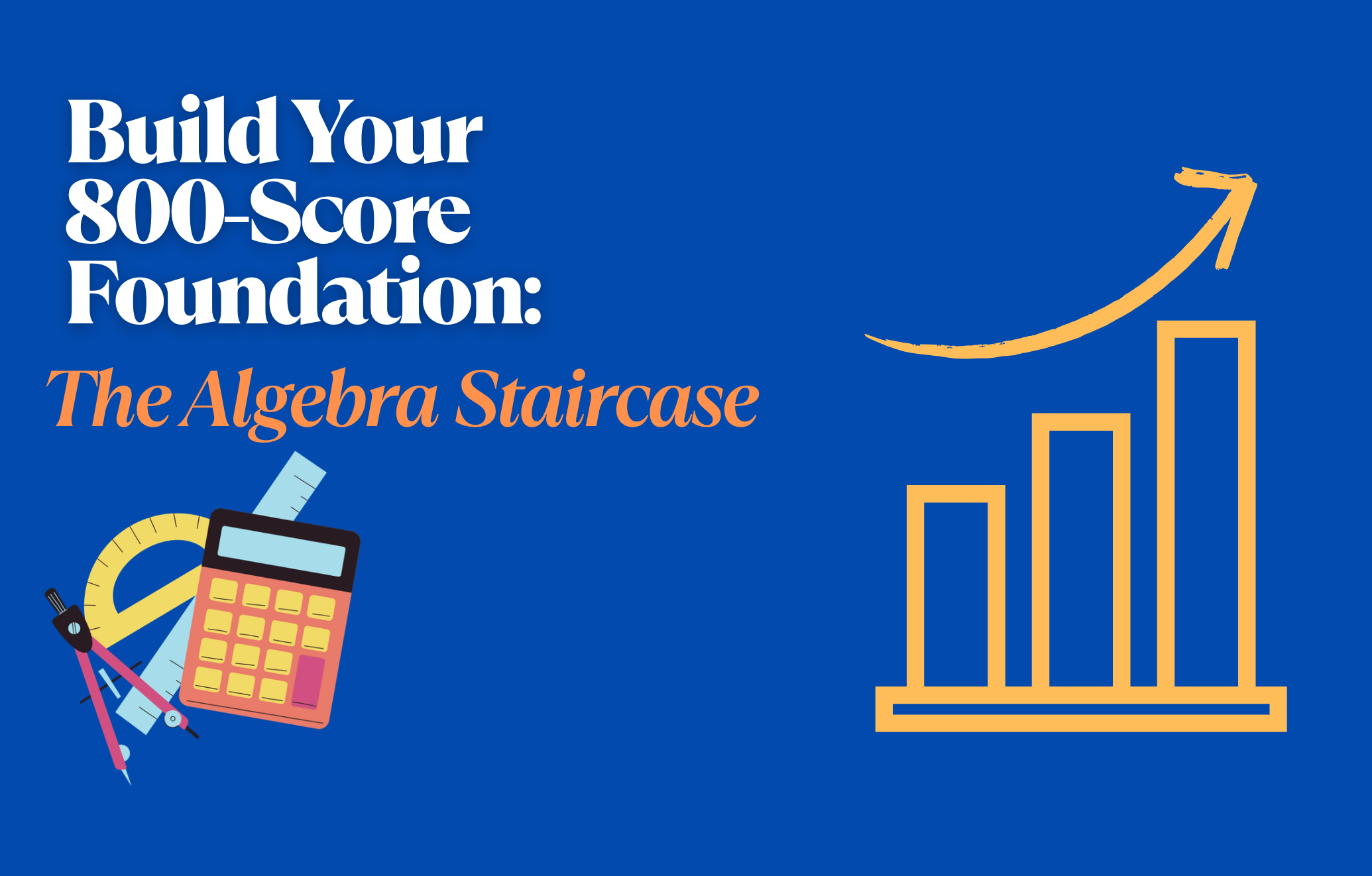How to Get a Perfect Score on the Digital SAT Math Section
Author
Phoenix Wilder
Date Published

Everyone has a different idea of what a “good” SAT score is, depending on their academic ambitions. If you’re applying to the nation’s most selective schools, you might set your sights on the highest score of all—an 800 in Math, and possibly a 1600 overall. But what does it really take to achieve a perfect 800 on the (relatively) new Digital SAT Math section? With a few key strategies, a disciplined mindset, and lots of targeted practice, you can put yourself in the best position to reach that goal.
In this guide, you’ll discover the eight essential steps for mastering Digital SAT Math. These strategies blend practical advice, mindset tips, and critical math skills—so you can walk into test day fully prepared for every challenge.
1. How Many Questions Do You Have to Get Right for a Perfect Score?
To earn a perfect 800 in Digital SAT Math, you almost always need to answer every single question correctly. While there have been rare cases on previous SATs where a single missed or blank question still resulted in a top score, that isn’t the norm—and you should not rely on such a possibility. To guarantee the score you want, you need to approach every question expecting that nothing except a perfect run will suffice.
Missing even one question could prevent you from achieving your goal. Since the Digital SAT is adaptive, the scoring algorithms may not be as forgiving to minor errors as you might hope. The clearest pathway to a perfect 800 is absolute accuracy on all math questions—plan on attempting and correctly answering 100% of them.
2. Write Out What the Test is Really Asking
One of the main reasons students lose points on Digital SAT Math isn’t miscalculation, but misunderstanding what the question is asking. With complex wordings and similar variables, it’s easy to solve for the wrong part—for example, finding the value of x when the question actually requires x + 4, or giving the answer in the wrong form.
To avoid this, try explicitly rephrasing the question to yourself before you start solving. Use Bluebook’s annotation tool or take quick notes on your scratch paper: jot down what exact value or expression you’re supposed to find. Is it “the value of y,” “the minimum possible value for t,” or “the value of a/b”? Directing your focus in this way reduces careless mistakes and ensures you’re answering the right question every time.
Taking a few extra seconds at the outset to make certain you understand the target can mean the difference between an 800 and a slightly lower score. Never assume that just because you solved the equation correctly, you’ve answered the true question being asked.
3. Don’t Rush the Early Questions
Careless errors are especially likely to happen on the easier, early questions in each Digital SAT Math module. These are often problems you’ve answered correctly hundreds of times in practice, so there’s a temptation to rush through them and save your focus for the more challenging problems that come later. While speed is important, you can’t afford to lose points due to hasty mistakes, especially when these questions are meant to be straightforward.
On the Digital SAT, the math modules are adaptive, and earlier questions generally serve as “warm-ups.” But every single point counts. Before you move on, pause to check: Did I actually answer the question being asked? Did I enter the right numbers into the calculator (or Desmos)? Did I make a typo or misread the prompt?
A moment of patience at the start saves you from unnecessary regret later—one careless blunder on an early question could cost you your perfect score, so treat every problem with respect regardless of its difficulty.
4. Learn Essential Math Shortcuts
While it’s important not to rush, you also need to work fast enough to tackle every problem within the time limit. That’s where math shortcuts and efficient calculation strategies come into play. Mastering a handful of core techniques will help you move through the Digital SAT Math section with speed and accuracy.
i. Cross-Multiplying
Whenever you encounter equations with proportions or two fractions set equal to each other, cross-multiplying lets you clear denominators instantly, reducing the equation to a manageable form. This technique not only keeps your scratch work clean but also minimizes the risk of arithmetic errors that come with manipulating fractions directly.
Keep an eye out for fraction-multiplication chains. Simplify whenever possible before actually multiplying out the numerators and denominators. And though you have access to Desmos throughout the Digital SAT, sometimes basic reductions are best done by hand for speed and clarity.
ii. Percentages
Percent problems on the SAT often cause confusion not because the math is hard, but because their wording tricks students into slow, roundabout thinking. The trick is to translate every piece of the percentage question directly into mathematical language as you read it.
For instance, a question stating, “What is 30 percent of 75?” instantly becomes x = (30/100) × 75 in your scratch work. Get used to these translations—“of” means multiply, “is” means equals, and percentages are just fractions over 100. With repetition, you’ll be able to handle nearly any percent question intuitively and efficiently.
5. Know Cold EVERY Math Topic Covered by the Test
A perfect score requires mastery across every single topic the Digital SAT Math section might cover. The Digital SAT includes a reference sheet, but to work at speed, you want those formulas and concepts committed to memory—you can’t afford to waste time hunting through reference material if you’re aiming for an 800.
You should be able to recall and apply concepts from algebra (linear, quadratic, and systems), advanced math (functions, polynomials, exponentials), geometry (areas, perimeters, similarity, basic trigonometry), and data analysis (ratios, proportions, statistics, probability) without hesitation. Don’t limit your studying to the “most common” question types—rare topics might appear as the one question that makes the difference for your perfect score.
As you study, continuously review weaker areas until every formula and core principle is as familiar as your own name. The study process can be intense, but if you want an 800, there’s no shortcut around this deep familiarity.
6. Improve Your “Math Intuition”
Scoring at the highest level isn’t just about memorization and method—it’s about developing an immediate sense for the logic underlying SAT math problems. “Math intuition” is what you develop through extensive, reflective practice: you begin to recognize the most efficient approach as soon as you see a question.
i. Use Answer Formats as Clues
Before jumping into calculations, check the answer choices. Are they expressed as decimals, fractions, or variables in factored form? The formatting can give important clues as to what math approach you should take and even what topic the question is drawn from. If every answer is in the format (x – n)(x + m), for example, then factoring is likely involved. If all the answers employ radicals, expect to see square root operations.
ii. Clumping
Watch for questions that ask you to solve for combined expressions rather than single variables, such as “What is 2y – 7?” instead of just “y.” These are designed to be solved with a shortcut—it’s usually possible to solve directly for the expression without reversing back to find y and substituting it in.
Exploring and practicing “clumping” problems in your review will help you recognize—and utilize—these shortcuts on the Digital SAT, saving valuable time and reducing steps.
iii. Weird Shapes
While geometry is a smaller component of the new Digital SAT, it’s still mandatory for a perfect score. Some geometry questions present unfamiliar or composite shapes that at first glance don’t resemble textbook examples. In these cases, remember: the Digital SAT only tests a finite, predictable set of geometric figures (such as triangles, rectangles, circles, and right solids). When you encounter an odd shape, look for ways to divide it into familiar pieces or to relate its dimensions to those of standard shapes.
For three-dimensional figures, focus on the handful of standard forms you might see (pyramids, prisms, spheres, cylinders). Keep general formulas for surface area and volume at your fingertips, and look for connections or relationships between the shapes—shared dimensions, diameters, or axes often hold the key.
7. Make Your Calculations Match the Answer Choices
Sometimes, you’ll do your work and get an answer—but what you’ve found doesn’t look anything like the provided answer choices. Instead of doubting yourself or guessing, pause and consider: how could your solution be rearranged or rewritten to resemble the answer options?
If you calculated “g + 9” and the answers all feature fractions or “g²,” think about the algebraic steps needed to get from your result to those structures. Maybe you need to square both sides, rationalize a denominator, factor an expression, or simply reduce a fraction. The answer choices aren’t just solutions; they’re hints about the form in which you should present your result. Adapting your answer will not only help you select the correct choice but may also alert you to hidden errors in your approach.
8. Calm Test-Taking Nerves
The mental aspect of test-taking can’t be overstated. You can have all the knowledge, intuition, and shortcuts in the world—but if nerves get the best of you, your performance can suddenly drop. The most effective way to manage anxiety is thorough preparation: the more familiar you are with every topic and the Digital SAT’s test platform, the more confidence you’ll have during the real exam.
If you feel anxious, take several deep breaths, and remind yourself that the College Board is only allowed to ask questions on defined content. If something looks unfamiliar, it’s almost certainly a twist on something you’ve already practiced. Trust in your preparation, lean on your tested approaches, and keep your focus on the present question.
For persistent nerves, imitate real testing conditions as much as possible in your practice—this desensitizes you to the test environment and reduces the risk of “blanking out” on exam day. Positive affirmations, healthy sleep, exercise, and good nutrition before test day also contribute to strong performance.
Conclusion
Reaching a perfect 800 on the Digital SAT Math section is a real accomplishment, and one that’s possible with strategic preparation and a disciplined mindset. The key steps are clear: aim for total accuracy, decode the question before solving, avoid easy mistakes on early problems, use efficient shortcuts, work towards comprehensive content mastery, develop your mathematical intuition, present your answers in the correct form, and approach the exam confidently.
By following these eight steps, you’ll give yourself the best possible chance of achieving that dream score. To further boost your preparation efficiency, consider using Best SAT Score’s adaptive full-length SAT practice tests to simulate real exam conditions and receive detailed performance analytics. Combined with a smart AI-powered study plan that customizes your weekly learning schedule, your path to an 800 will be clearer and more manageable. With dedication, consistent practice, and a calm mindset, your 800 is within reach—good luck on your Digital SAT Math journey!
Related Posts
Master SAT math by learning time-saving techniques, solving equations, and tackling word problems confidently. Prep smart, score high!

Discover algebra's pivotal role in DSAT success - from variables to geometry. Master systematic problem-solving through our guided, step-by-step methodology.